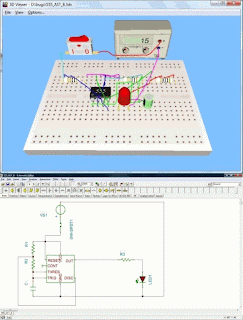

Some of the well-known global firms
are Westinghouse Plasma Corporation
(WPC), Integrated Environmental
Technologies (IET), The Solena Group
and Startech. Their proprietary plasma
gasification systems are described
below.
Westinghouse Plasma Corporation
(WPC). WPC’s proprietary
plasma gasification vitrification reactor
design (Fig. 5) combines a movingbed
gasifier with its industrial plasma
torch technology. WPC, in conjunction
with Alter Nrg (an engineering firm),
is able to provide full gasification
equipment, complete with feed handling,
slag removal and gas cooling
systems, for various applications. The
system engineering drawing is shown
in Fig. 6.
WPC has commercially operating/
under-installation facilities in Japan,
USA and India.
Japan. Hitachi Metals’s waste-toenergy
facility, located in Utashinai,
Japan, was constructed in 2002 and
has been operational since 2003. The
facility processes 200-280 tonnes/day
of a mixture of auto shredder residue
and municipal solid waste to produce
electricity.
A second facility, built near the
neighbouring cities of Mihama and Mikata,
Japan, was commissioned in 2002
to treat 20 tonnes per day of municipal
solid waste and four tonnes per day of
sewage sludge for production of heat
utilised in a municipal waste-water
treatment plant.
India. Two hazardous
waste disposal plants with
a capacity of 72 tonnes/
day and using WPC gasification
technology and
plasma torches to produce
electricity are under
construction in Pune and
Nagpur, by SMS Infrastructures,
India. When
operational, these are expected
to produce 5 megawatts
of electricity.
USA. One WTE facility
is at approval stage in
the US. When completed,
Geoplasma’s WTE plant in
Florida will be the largest
plasma gasification facility
in the world processing
up to 3000 tonnes per day
of municipal solid waste
and producing 120 MW of
electricity. The first phase will process
1500 tonnes per day and produce
60 MW of electricity, which is enough
to power 60,000 homes. The facility
is expected to become operational by
mid-2010.
Integrated Environmental Technologies
(IET). It uses a plasmaenhanced
melter (PEM) to transform
waste into highly stable glass-like
residues, recoverable metals and
hydrogen-enriched gas (Fig. 7). The
technology is unique in that it combines
three processes: plasma arc
using multiple graphite electrodes,
joule (resistance) heating using glass
melter technology and superheated
steam. This combination results in a
stable and highly controllable treatment
system.
The plasma operates at temperatures
from 3000°C to 10,000°C in an
oxygen-free environment with the
presence of superheated steam ensuring
that pyrolysis and steam reforming
reactions dominate. A high-efficiency
scrubber is used to remove volatile
metals and other pollutants from
the hydrogen-rich product gas (100
BTU/scf or more), a portion of which
may be recycled to provide power
to the PEM and
the other portion
used to generate
electricity.
Metals in the
waste are recovered.
The glassy
aggregate is also
recovered and
may be recycled
as road building,
blasting grit
or construction
material. Volume
reductions are up
to 98 per cent depending
on how
the process is run
and the composition of the waste.
IET is more interested in treating
radioactive, hazardous, industrial, municipal,
tire, incinerator ash and medical
waste streams. It has sold several
commercial PEM units throughout the
world to process a wide range of waste
materials. For details, visit ‘www.inentec.
com/commercial.html.’
The Solena Group. The Solena
Group, a strategic partner of Westinghouse,
uses the integrated plasma
gasification combined cycle (IPGCC).
It is a unique process that uses a
patented plasma gasification vitrification
(PGV) technology for conversion
of low-value fuels/feed stocks
(such as coal waste, petroleum coke,
bio-mass and different waste forms
including municipal solid waste)
into a low-heating-value synthesis or
syngas containing carbon monoxide
and hydrogen gases. This gas is then
employed as a primary fuel for a gas
turbine.
The IPGCC can also be viewed as
a two-stage processor of an opportunity
feedstock. The feedstock is first
gasified (partially oxidised) in a gasifier
using high-temperature plasma
heating systems at atmospheric
pressure. The gas is then cleaned and
combusted (completely oxidised) in
the gas turbine to produce electricity.
The PGV reactor, in essence, cleans
the solid/liquid and/or dirty fuels/
feed stocks by converting them into a
valuable byproduct fuel gas or syngas
to power a gas turbine.
The IPGCC system generally
consists of four separate processes:
feedstock handling, plasma gasification
and vitrification, gas cooling and
clean-up, and gas turbine combined
cycle.
The IPGCC system offers significant
advantages over standard IGCC.
By applying the PGV technology for
gasifying the feedstock, the plasma
heating system provides an independent
and extremely powerful heating
by the plasmagenerated
heat
and undergoes
partial oxidation
to be released as a
mixture of H2 and
CO. The syngas
has a heating value
of about onethird
to one-sixth
of natural gas. All
inorganic or nonh
y d r o c a r b o n -
based materials in
the feedstock are
simultaneously
vitrified into an
inert glassy slag,
suitable for use as
construction materials
including
aggregates, tiles
or bricks.













